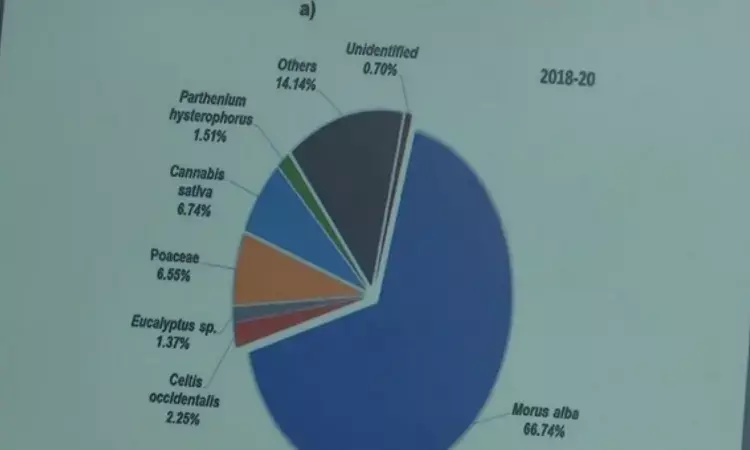- Home
- Medical news & Guidelines
- Anesthesiology
- Cardiology and CTVS
- Critical Care
- Dentistry
- Dermatology
- Diabetes and Endocrinology
- ENT
- Gastroenterology
- Medicine
- Nephrology
- Neurology
- Obstretics-Gynaecology
- Oncology
- Ophthalmology
- Orthopaedics
- Pediatrics-Neonatology
- Psychiatry
- Pulmonology
- Radiology
- Surgery
- Urology
- Laboratory Medicine
- Diet
- Nursing
- Paramedical
- Physiotherapy
- Health news
- Fact Check
- Bone Health Fact Check
- Brain Health Fact Check
- Cancer Related Fact Check
- Child Care Fact Check
- Dental and oral health fact check
- Diabetes and metabolic health fact check
- Diet and Nutrition Fact Check
- Eye and ENT Care Fact Check
- Fitness fact check
- Gut health fact check
- Heart health fact check
- Kidney health fact check
- Medical education fact check
- Men's health fact check
- Respiratory fact check
- Skin and hair care fact check
- Vaccine and Immunization fact check
- Women's health fact check
- AYUSH
- State News
- Andaman and Nicobar Islands
- Andhra Pradesh
- Arunachal Pradesh
- Assam
- Bihar
- Chandigarh
- Chattisgarh
- Dadra and Nagar Haveli
- Daman and Diu
- Delhi
- Goa
- Gujarat
- Haryana
- Himachal Pradesh
- Jammu & Kashmir
- Jharkhand
- Karnataka
- Kerala
- Ladakh
- Lakshadweep
- Madhya Pradesh
- Maharashtra
- Manipur
- Meghalaya
- Mizoram
- Nagaland
- Odisha
- Puducherry
- Punjab
- Rajasthan
- Sikkim
- Tamil Nadu
- Telangana
- Tripura
- Uttar Pradesh
- Uttrakhand
- West Bengal
- Medical Education
- Industry
PGIMER develops pollen calendar to identify potential allergy triggers

The Department of Community Medicine and School of Public Health, PGIMER, Chandigarh, examined the seasonal periodicities of airborne pollen spectrum and developed the first pollen calendar for Chandigarh city.
Chandigarh: Chandigarh now has its first pollen calendar which can identify potential allergy triggers and provide a clear understanding for clinicians as well as allergy sufferers about their causes to help limit their exposure during high pollen loads, the Department of Science and Technology said on Monday.
About 20-30 per cent of India's population suffer from allergic rhinitis/hay fever and approximately 15 per cent develop asthma.
Pollens are considered major outdoor airborne allergens responsible for allergic rhinitis, asthma and atopic dermatitis in humans. Pollen calendars represent the time dynamics of airborne pollen taxa in graphical form in a particular geographical area.
They yield readily accessible visual details about various airborne pollen taxa present throughout the year, with their seasonality in a single picture. Pollen calendars are location-specific with concentrations closely related to locally distributed flora.
The Department of Community Medicine and School of Public Health, PGIMER, Chandigarh, examined the seasonal periodicities of airborne pollen spectrum and developed the first pollen calendar for Chandigarh city.
"This will help prepare early advisories and disseminate them through media channels to the citizens so that they can use protective gear during the period when the concentration of allergic pollens will be high. It is also a preventive tool for sensitive people to diminish exposure when the levels of aero-pollen are high during specific periods," the DST said.
The calendar was made possible by a team led by Ravindra Khaiwal of the Department of Community Medicine and School of Public Health, PGIMER, Chandigarh. It included Ashutosh Aggarwal, Head of Department of Pulmonary Medicine at PGIMER, Associate Professor Suman Mor, and Akshi Goyal and Sahil Kumar, research scholars from Department of Environment Studies, Panjab University.
The group explored the main pollen seasons, their intensities, variations and aerobiologically significant pollen types in Chandigarh.
The study brought out the first pollen calendar for Chandigarh, provided up-to-date information, and highlighted the variability of crucial pollen types in different seasons.
The prominent airborne pollen dominating seasons were spring and autumn, with maximum species surfacing when the phenological and meteorological parameters are considered favourable for pollen grains'' growth, dispersion and transmission.
The study supported by the the DST was recently published in the Atmospheric Environment journal.
"The study aims to bring airborne pollen seasonal information to the susceptible population, healthcare professionals, policymakers, and scientists to be familiar with the current changes in the environment, which can further help develop mitigation strategies," said Mor.
"The findings of this study would enhance the understanding of airborne pollen seasons, which may further help to minimize pollen allergies," Aggarwal said.
Medical Dialogues Bureau consists of a team of passionate medical/scientific writers, led by doctors and healthcare researchers. Our team efforts to bring you updated and timely news about the important happenings of the medical and healthcare sector. Our editorial team can be reached at editorial@medicaldialogues.in.


